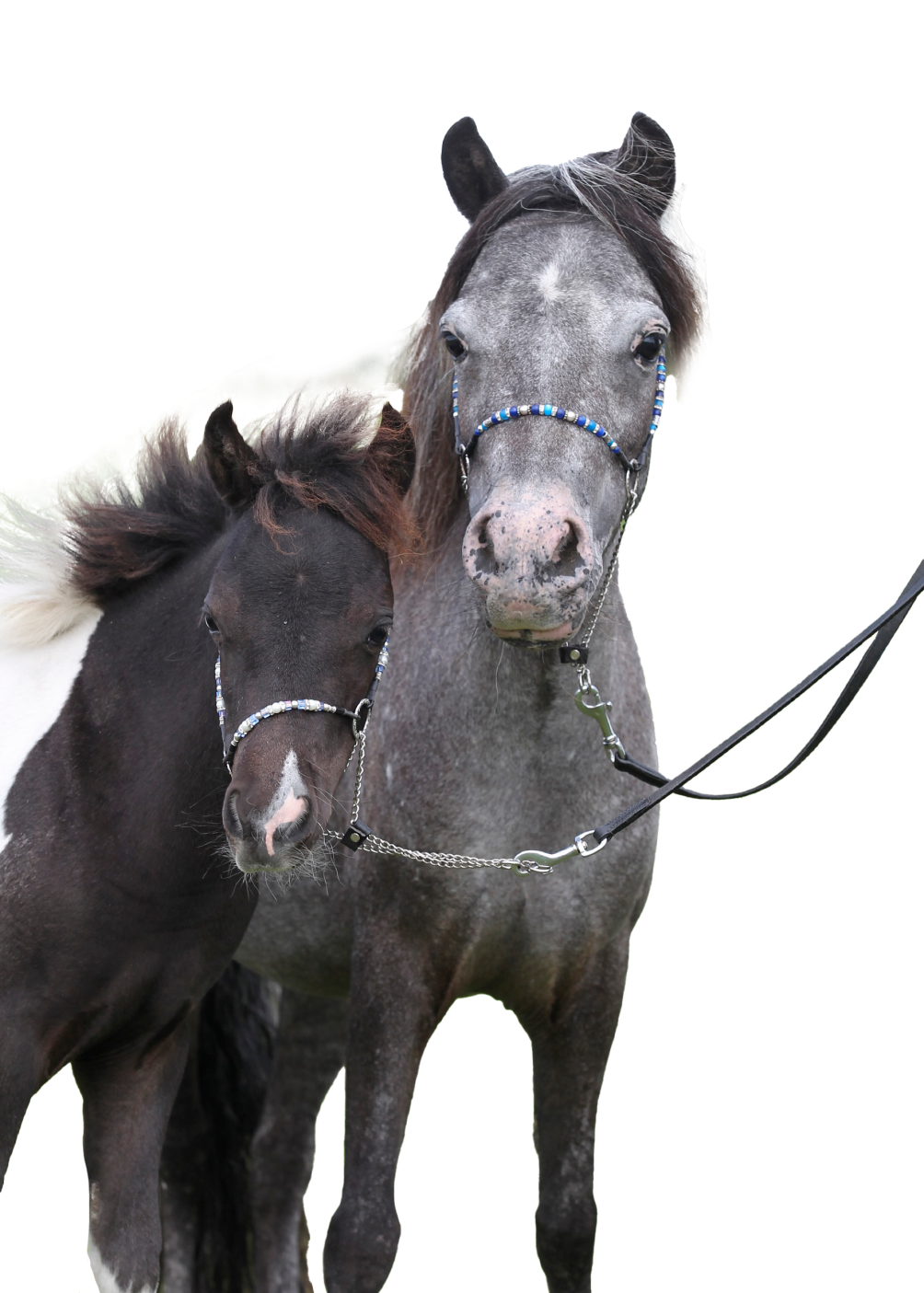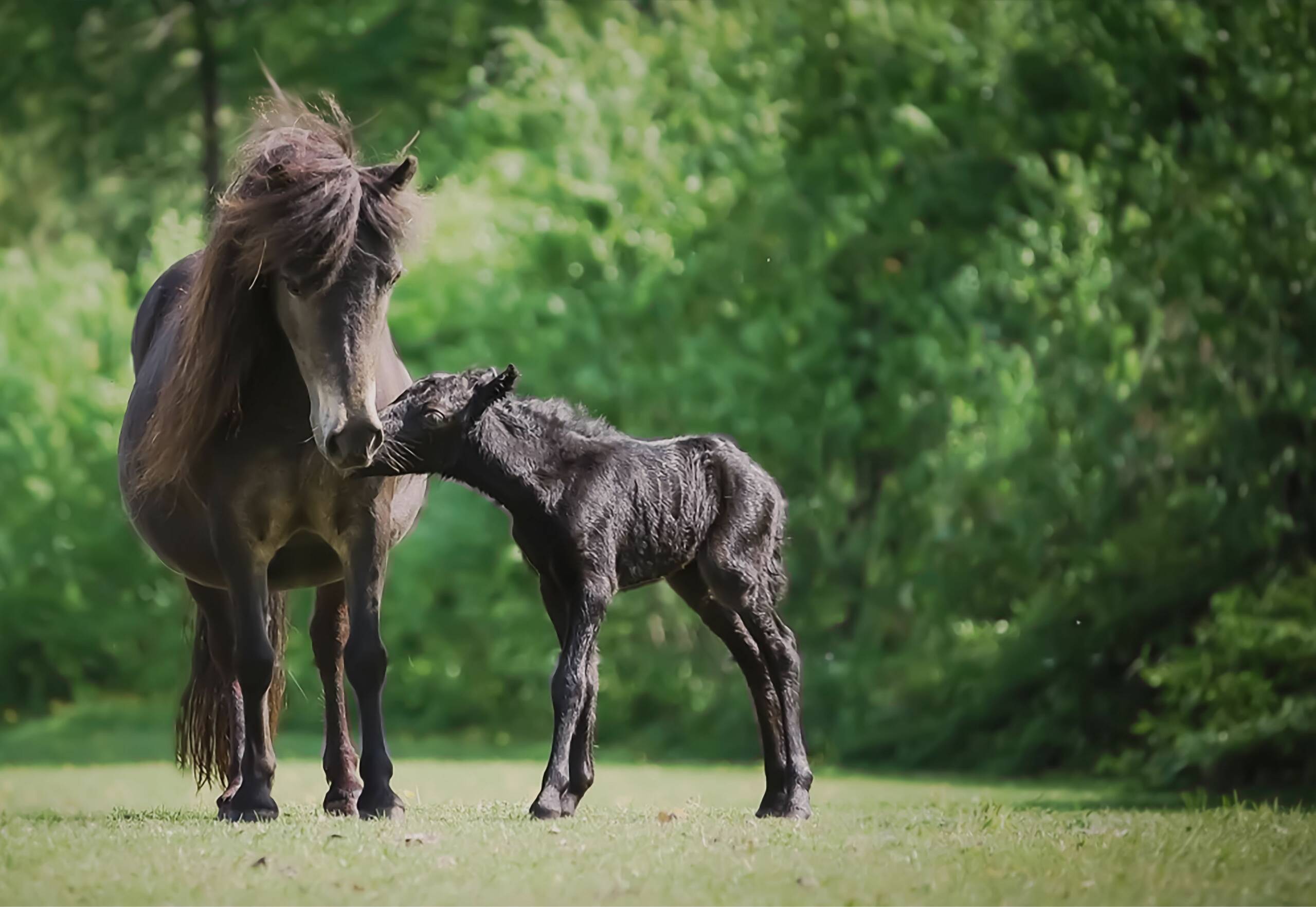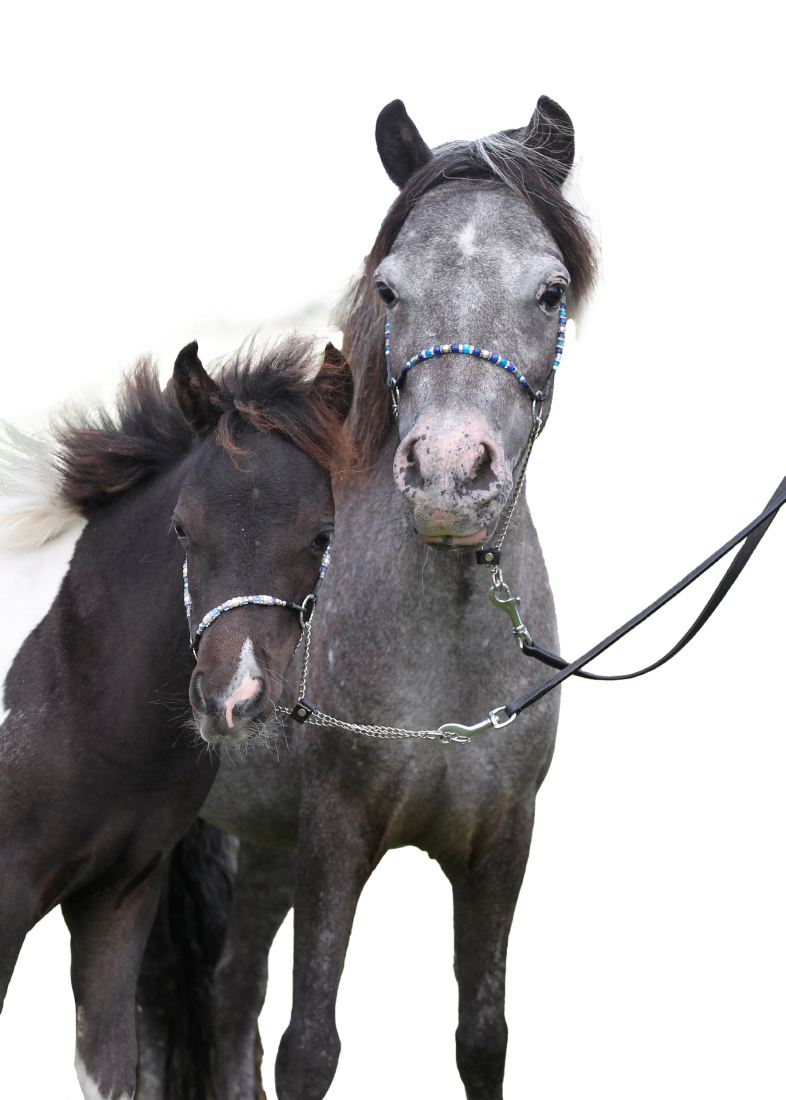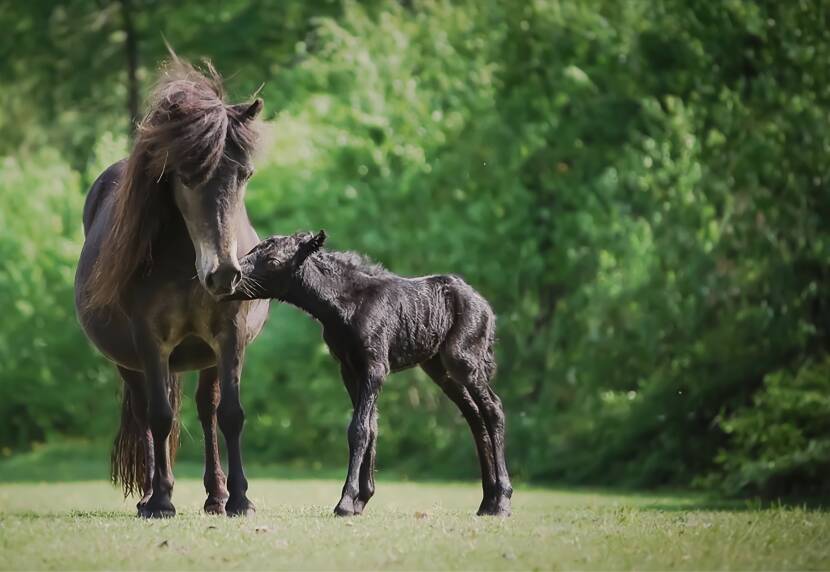Did you know
The typical lifespan of the Fallabella horse is actually higher than most other horses. The Falabella commonly has a life expectancy of 40-45 years of age, whereas the normal lifespan for horses, in general, is estimated to be around 25-30 years.

Purchasing a Falabella
If you are dreaming of owning a Falabella horse, you should be aware that it isn’t an easy task. Being rare, they are not easy to find. And if you are looking for one, you should be careful. More often than not, you will find horses that are a cross breed of Falabella and more traditional types of miniature horses. Therefore, it is recommended that the buyer asks for an identity number before purchasing the horse. If the identity number cannot be provided, it is certain that the horse for sale, is not a genuine Falabella. The breed is rare, and the studbook is closed. Only 100% pure Falabella’s can be registered, and all horses are DNA tested at registration. For this reason, the Falabella horse cannot be confused with other miniature horses.
Facts about the Falabella
Type: Miniature horse
Origin: Argentina
Colours: All colours
Height: 70cm to 109cm
Character: Kind and intelligent
Used for: Driving, freedom dressage, agility, as therapy horses or as pets
Rzadkiewa F. Tinkerbelle with her foal Hooidonkhofs F. Tia Tequil.
Photo: Leontien Ruissen
The mare Mercedes with her foal Bibi Resto Cazador. Photo: Y. van Werkhoven.
J ust like there are many different kinds of riders, there are also so many different kinds of horse breeds. All of them being unique and fascinating. In our previous magazine, we took a closer look at the biggest horse breed in the world, the Shire. In this issue, we will have a look at the smallest horse breed – the Falabella.
Origin of the Falabella breed
The Falabella horse is known as the first and original miniature horse breed. The breed originally came from Argentina and is named after the Falabella family. There are many myths and stories about how the Falabella breed has emerged and become the horse we have today. The International Falabella Miniature Horse Association tells the following story of a family named Falabella. The Falabella horse is said to be descended from Andalusian and Spanish Barb horses, who were brought to Argentina in the 15th century, when Spain was trying to concur the country. However, after this, the horses were left to roam free in Argentina. During the next centuries, the harsh environment and inbreeding caused a reduction in the horse’s size, and they became naturally small horses.
In the 1840s, these small horses were discovered and taken in by a man called Patrick Nutall. He took take care of these small horses, and in his breeding, he made sure to sustain their small size. He later passed on his horses and his knowledge to his son-in-law, Juan Falabella. Juan continued to breed the small horses, and the family started the Falabella Farm.
During the breeding process, they made sure to use the smallest horses, but they also focussed on a variety of colours. This is the reason why, the Falabella’s we see today, comes in so many different colours.
Took the world by storm
When the Falabella family had made a pure and consistent breed, they decided to share it with the rest of the world. As soon as they showed the cute and beautiful breed to other countries, people fell in love. The small breed made headlines in many magazines – even National Geographic Magazine wrote about it.
The breed became very popular and some of the richest and most famous people bought the small horses. The horses were for instance bought by kings, princes, presidents and movie stars.
The breed was shown to the world in the 1960s, so it is still a fairly recent registered breed.
Cute and stunning
One of the reasons why the Falabella became so popular is their beautiful exterior. Most horse lovers think that the Falabella’s small size makes them look cute and adorable. Adding to their cuteness factor is their elegant exterior, which makes them beautiful. The many wonderful colour options make this breed exciting and attractive.
In addition to their lovely looks, the Falabella keeps impressing people with their temperament and personality. It is a kind and intelligent horse that is easy to work with. That is why they are suitable for both children as well as adults. Besides this, the Falabella is typically very affectionate and loyal, and they seem to really enjoy being around humans.
A rare horse breed
The Falabella breed is categorised as a rare horse breed as there are not many of them worldwide. It has been estimated that we only have a few thousand Falabella horses. Supporting the fact of being a rare breed has become one of the most common reasons to breed this unique, little horse.
On their website, The Falabella Miniature Horse Association, states that because of the breeds rarity the primary reason to own and breed Falabella’s is to protect and preserve the breed. This is done through dedicated breeding and keeping the bloodlines pure, by not cross breeding.
The small horses are not commonly used for riding because of their size. The only people who can sit on them are small children. Instead, they are primarily used for driving, liberty dressage, agility, for shows, as therapy horses or just as pets.
By Line Holm-Bode Photos: Stoeterij Hooidonkhof, Leontien Ruissen & Y. van Werkhoven. Sources: Falabella Miniature Horse Association & The European Falabella Studbook,
Many people have probably noticed the small Falabella horse because of their cute appearance. Their size and exterior make most people smile and go “aww”. But how has the breed actually evolved, and what do you do with such a small horse? These are some of the aspects this article will look into.

The mare Mercedes with her foal Bibi Resto Cazador. Photo: Y. van Werkhoven.
Rzadkiewa F. Tinkerbelle with her foal Hooidonkhofs F. Tia Tequil.
Photo: Leontien Ruissen

Did you know?
The typical lifespan of the Fallabella horse is actually higher than most other horses. The Falabella commonly has a life expectancy of 40-45 years of age, whereas the normal lifespan for horses, in general, is estimated to be around 25-30 years.
Purchasing a Falabella
If you are dreaming of owning a Falabella horse, you should be aware that it isn’t an easy task. Being rare, they are not easy to find. And if you are looking for one, you should be careful. More often than not, you will find horses that are a cross breed of Falabella and more traditional types of miniature horses. Therefore, it is recommended that the buyer asks for an identity number before purchasing the horse. If the identity number cannot be provided, it is certain that the horse for sale, is not a genuine Falabella. The breed is rare, and the studbook is closed. Only 100% pure Falabella’s can be registered, and all horses are DNA tested at registration. For this reason, the Falabella horse cannot be confused with other miniature horses.
Facts about the Falabella
Type: Miniature horse
Origin: Argentina
Colours: All colours
Height: 70cm to 109cm
Character: Kind and intelligent
Used for: Driving, freedom dressage, agility, as therapy horses or as pets
J ust like there are many different kinds of riders, there are also so many different kinds of horse breeds. All of them being unique and fascinating. In our previous magazine, we took a closer look at the biggest horse breed in the world, the Shire. In this issue, we will have a look at the smallest horse breed – the Falabella.
Origin of the Falabella breed
The Falabella horse is known as the first and original miniature horse breed. The breed originally came from Argentina and is named after the Falabella family. There are many myths and stories about how the Falabella breed has emerged and become the horse we have today. The International Falabella Miniature Horse Association tells the following story of a family named Falabella. The Falabella horse is said to be descended from Andalusian and Spanish Barb horses, who were brought to Argentina in the 15th century, when Spain was trying to concur the country. However, after this, the horses were left to roam free in Argentina. During the next centuries, the harsh environment and inbreeding caused a reduction in the horse’s size, and they became naturally small horses.
In the 1840s, these small horses were discovered and taken in by a man called Patrick Nutall. He took take care of these small horses, and in his breeding, he made sure to sustain their small size. He later passed on his horses and his knowledge to his son-in-law, Juan Falabella. Juan continued to breed the small horses, and the family started the Falabella Farm.
During the breeding process, they made sure to use the smallest horses, but they also focussed on a variety of colours. This is the reason why, the Falabella’s we see today, comes in so many different colours.
Took the world by storm
When the Falabella family had made a pure and consistent breed, they decided to share it with the rest of the world. As soon as they showed the cute and beautiful breed to other countries, people fell in love. The small breed made headlines in many magazines – even National Geographic Magazine wrote about it.
The breed became very popular and some of the richest and most famous people bought the small horses. The horses were for instance bought by kings, princes, presidents and movie stars.
The breed was shown to the world in the 1960s, so it is still a fairly recent registered breed.
Cute and stunning
One of the reasons why the Falabella became so popular is their beautiful exterior. Most horse lovers think that the Falabella’s small size makes them look cute and adorable. Adding to their cuteness factor is their elegant exterior, which makes them beautiful. The many wonderful colour options make this breed exciting and attractive.
In addition to their lovely looks, the Falabella keeps impressing people with their temperament and personality. It is a kind and intelligent horse that is easy to work with. That is why they are suitable for both children as well as adults. Besides this, the Falabella is typically very affectionate and loyal, and they seem to really enjoy being around humans.
A rare horse breed
The Falabella breed is categorised as a rare horse breed as there are not many of them worldwide. It has been estimated that we only have a few thousand Falabella horses. Supporting the fact of being a rare breed has become one of the most common reasons to breed this unique, little horse.
On their website, The Falabella Miniature Horse Association, states that because of the breeds rarity the primary reason to own and breed Falabella’s is to protect and preserve the breed. This is done through dedicated breeding and keeping the bloodlines pure, by not cross breeding.
The small horses are not commonly used for riding because of their size. The only people who can sit on them are small children. Instead, they are primarily used for driving, liberty dressage, agility, for shows, as therapy horses or just as pets.
By Line Holm-Bode Photos: Stoeterij Hooidonkhof, Leontien Ruissen & Y. van Werkhoven. Sources: Falabella Miniature Horse Association & The European Falabella Studbook.
Many people have probably noticed the small Falabella horse because of their cute appearance. Their size and exterior make most people smile and go “aww”. But how has the breed actually evolved, and what do you do with such a small horse? These are some of the aspects this article will look into.
